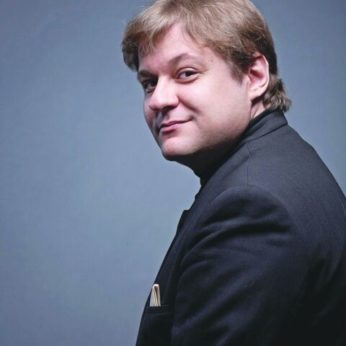Composer: Mikail Glinka (b. 1804 - d. 1857)
Performance date: 03/07/2015
Venue: Bantry Library
Composition Year: 1823
Duration: 00:24:22
Recording Engineer: Richard McCullough, RTÉ lyric fm
Instrumentation Category:Sextet
Instrumentation Other: pn,db,2vn,va,vc
Artists:
Borodin String Quartet (Ruben Aharonian, Sergey Lamovsky [violins], Igor Naidin [viola], Vladimir Balshin [cello]) -
[quartet]
Niek de Groot -
[double bass]
Peter Laul -
[piano]

Glinka
was born into a wealthy military family in the Russian province of Smolensk. He
was sent to a school for the nobility in St. Petersburg, excelling in
languages, mathematics, science and music. He even had three lessons from John
Field, then the leading pianist in the city.
He joined the Department of Public Highways but spent most of his time
enjoying life and composing. Always sickly, he was sent to Italy in 1830,
greatly widening his musical knowledge and meeting such luminaries as
Mendelssohn and Berlioz. Eventually on returning home he decided to do for
Russian music what Donizetti and Bellini had achieved for Italian culture. His opera, A
Life for the Tsar, was the first Russian nationalist music drama (1836) and
was a huge success; he is regarded now as the father of Russian opera. He died suddenly while visiting Berlin but
his body was brought back to St. Petersburg where he is interred in the famous Composers’
Corner in the Nevsky cemetery.
The
Grand Sextet dates from 1832, so the
influences of his Italian sojourn are clearly apparent in its attractive pages.
He began it when staying on Lake Maggiore on a rest cure, where he spent time
with his doctor’s married daughter, causing some local gossip. The work is dedicated to a friend of
hers. The piano launches the first
movement with a strong flourish; it tends to be the principal instrument
throughout the Sextet and also introduces the first subject. The cello presents
the second subject. Glinka develops these ideas impressively in sonata-form,
the longest movement of the Sextet (as long as the other two together). A
recapitulation recalls the opening fanfare and the movement ends with a
powerful coda.
A
lovely slow, nocturnal melody in 6/8 launches the second movement, perhaps
reflecting his time with John Field. The piano introduces it solo, then the
other instruments join in and treat it rhapsodically. In the central section,
the two violins present a faster duet, rather in a gypsy style. The opening melody
returns briefly and leads straight into the Finale.
Once again the piano launches the lively, dance-like theme, while other
charming melodies emerge as the music increases in tension and this delightful
work ends in a riot of melody, finishing with a vigorous coda.
Copyright © 2025 West Cork Music. All rights reserved.
Designed and developed by Matrix Internet